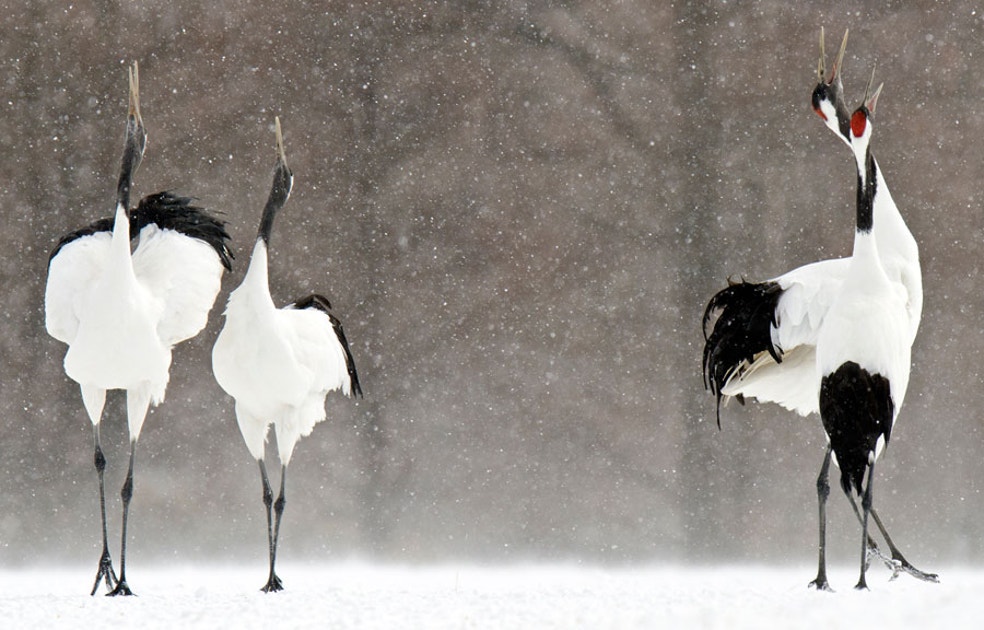
What Birds Tell Us About Climate Change
Birds have long served as nature’s messengers, offering vital insights into the health of our planet. Today, they are sending an urgent warning: climate change is pushing many species toward the brink of extinction. The increasing frequency of extreme weather, habitat destruction, and shifting ecosystems are dramatically altering bird populations worldwide. Research from organizations like the National Audubon Society, the American Bird Conservancy, and Nature Canada reveals that if global temperatures continue to rise, nearly two-thirds of North American bird species are at risk.

Climate Change is Reshaping Bird Habitats and Migration
As temperatures rise and weather patterns shift, birds are being forced to adapt. Many species depend on specific environmental conditions, and even slight disruptions can have severe consequences.
Audubon’s research shows that warming temperatures are altering bird habitats at an alarming rate. Coastal erosion, rising sea levels, and forest loss threaten nesting and feeding grounds.
The American Bird Conservancy (ABC) has observed shifts in migration patterns, with many species traveling earlier or later than usual. This mismatch between migration timing and food availability can significantly impact survival rates.
Nature Canada warns that birds like the Snowy Owl and Common Loon, which depend on boreal forests and wetlands, are struggling as these ecosystems change due to global warming.
For some birds, adaptation is nearly impossible, leading to sharp population declines.
Extreme Weather and Habitat Destruction Are Devastating Bird Populations
Climate change is intensifying extreme weather events such as hurricanes, droughts, wildfires, and heatwaves, all of which have catastrophic effects on birds.
Stronger storms can destroy entire colonies of seabirds, while rising temperatures force many species to move to higher altitudes or latitudes, where suitable habitats are shrinking.
Droughts and wildfires threaten waterfowl, songbirds, and grassland birds by reducing food and nesting areas.
Urban expansion and deforestation further shrink habitats, leaving birds with fewer safe places to breed and rest.
Without intervention, these challenges will only worsen, accelerating the decline of many vulnerable species.
Disrupted Food Chains Threaten Bird Survival
Climate change is causing disruptions in the food web, making it harder for birds to find food.
Warmer temperatures are reducing insect populations, which many birds rely on for sustenance. Swallows, flycatchers, and other insectivores are particularly affected.
Ocean warming and acidification are depleting fish stocks, impacting seabirds such as puffins and pelicans.
Changes in plant blooming cycles are affecting nectar availability, putting hummingbirds and pollinators at risk.
These shifts make it harder for birds to reproduce and survive, leading to declining populations.
Can Birds Adapt? Some Will—Many Won’t
While certain birds can adjust to changing conditions, many specialized species face a grim future.
Generalist species, like pigeons and crows, have shown resilience in urban environments.
Specialist birds, such as the Piping Plover and Kirtland’s Warbler, struggle due to their dependence on specific habitats and food sources.
The ability to adapt depends on factors like genetic diversity, habitat availability, and the speed of environmental change. Unfortunately, for many birds, the pace of climate change is simply too rapid to allow for successful adaptation.
What Can Be Done? Conservation and Climate Action
Despite the grim outlook, conservation efforts can still make a difference. Organizations like Audubon, ABC, and Nature Canada emphasize the need for immediate action, including:
Reducing carbon emissions to slow global warming and protect critical bird habitats.
Preserving and restoring natural areas such as wetlands, forests, and grasslands to provide birds with safe nesting and feeding grounds.
Supporting bird-friendly policies, including stronger climate laws and sustainable urban planning.
Engaging in citizen science projects, such as bird monitoring programs, to collect valuable data that can inform conservation efforts.
Conclusion: Birds Are Sounding the Alarm—Will We Listen?
Birds are among the most sensitive indicators of climate change, and their struggles reflect the broader environmental crisis facing our planet. Without immediate action, many species could disappear forever. However, by recognizing the warnings birds are giving us and taking meaningful steps to reduce our environmental impact, we can help protect both their future and our own. The time to act is now—before it’s too late.
Resources :




